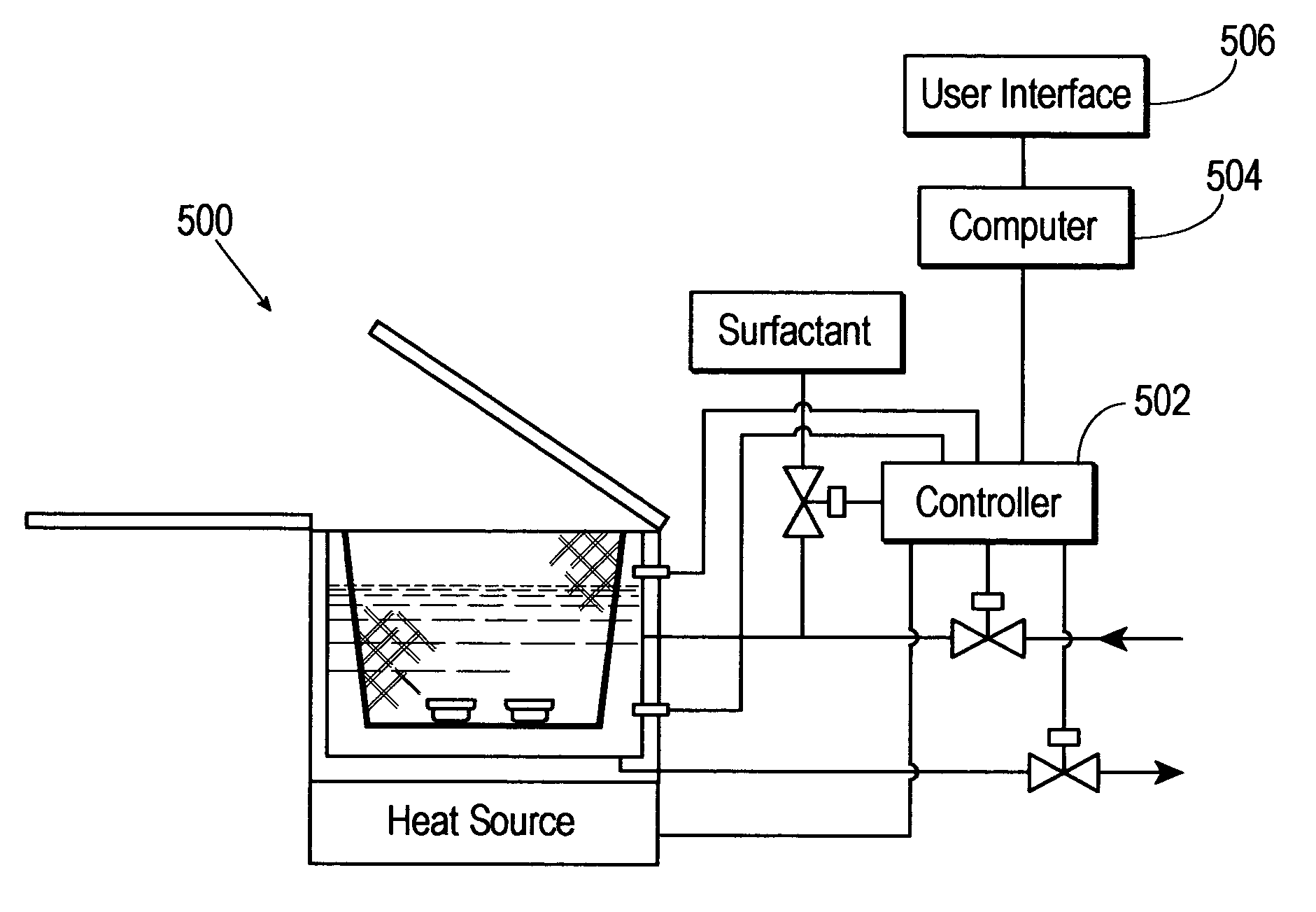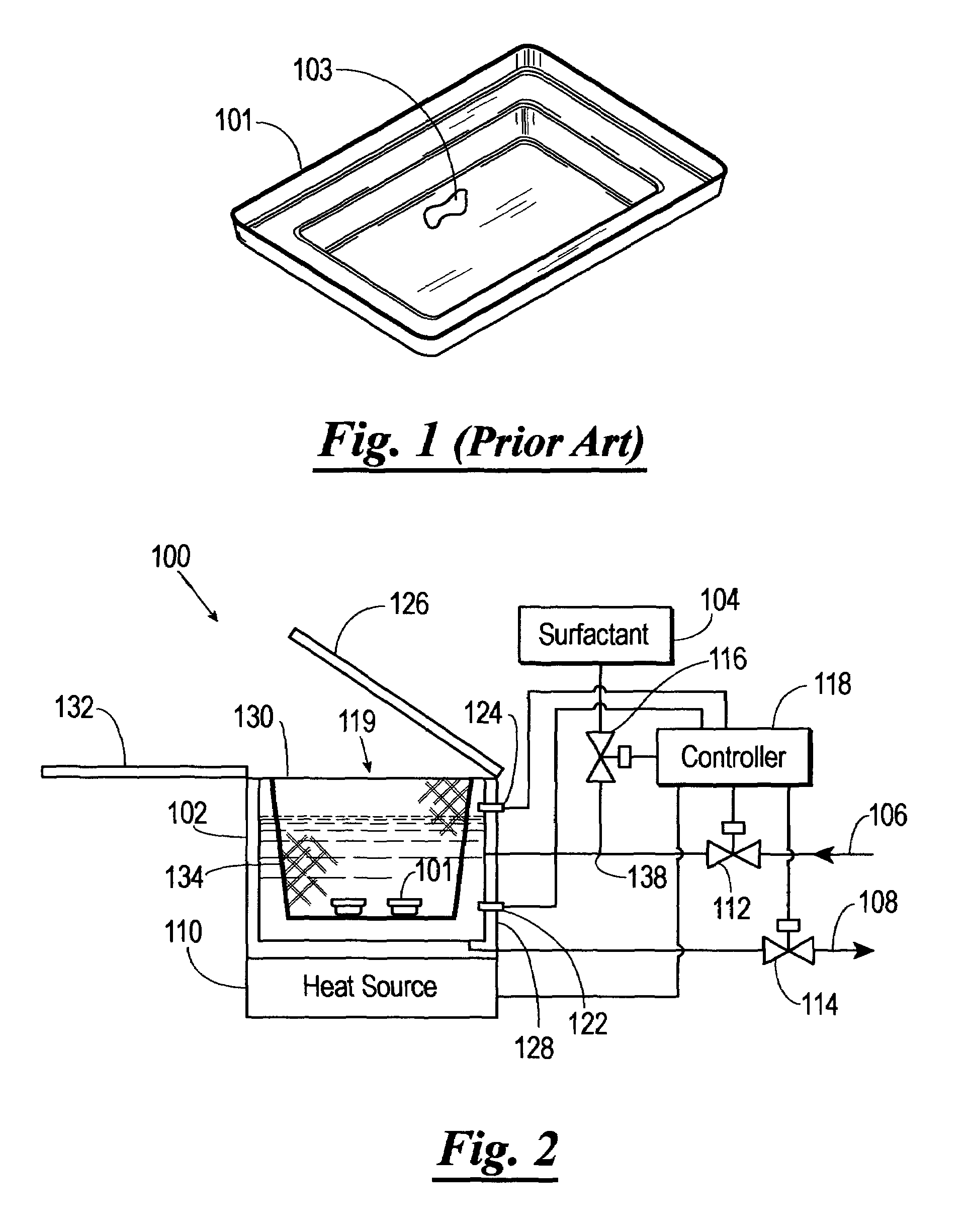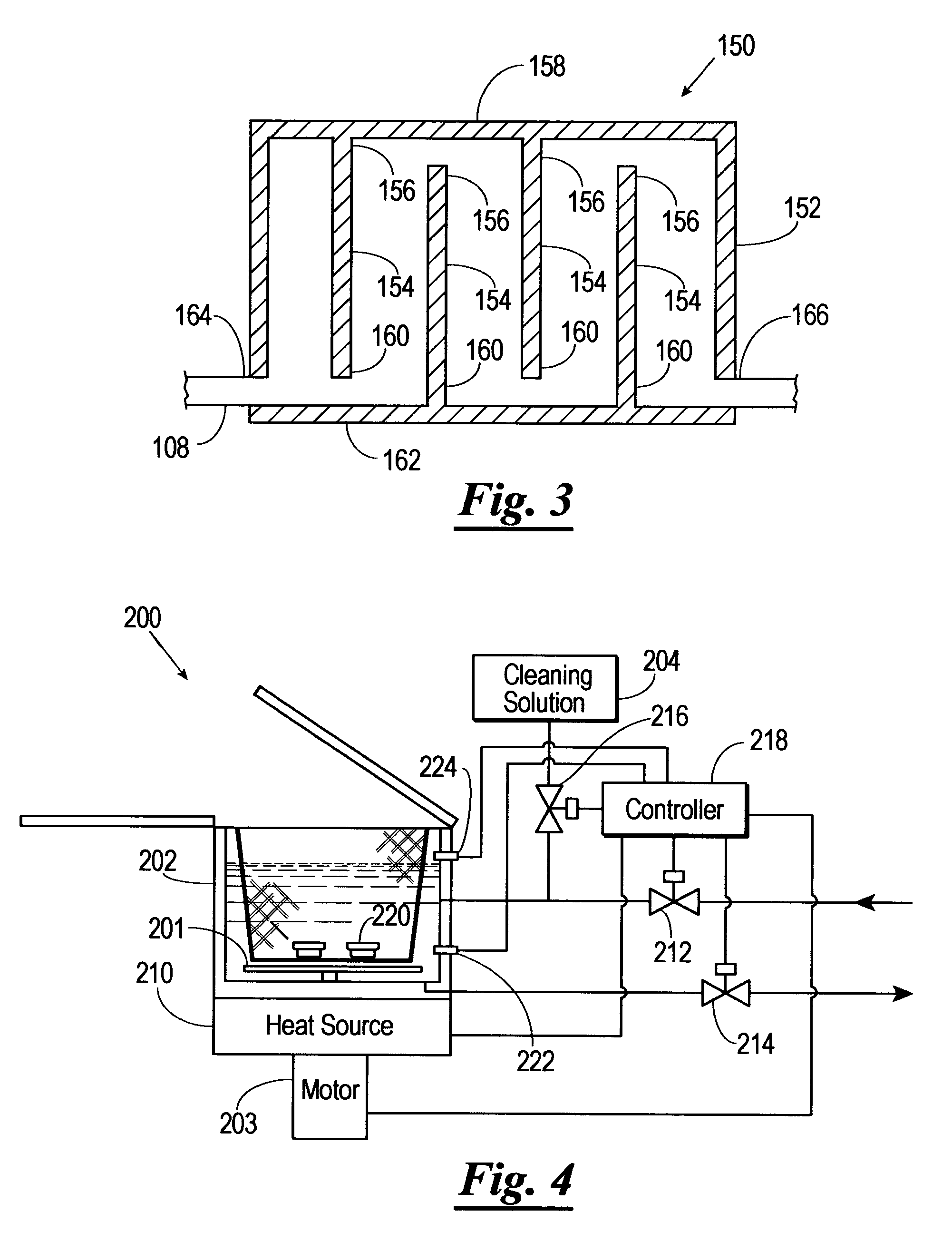Method for cleaning tissue processing molds
a tissue processing and mold technology, applied in the direction of cleaning using liquids, separation processes, instruments, etc., can solve the problems of obvious fire and explosive danger, high flammability of xylene,
- Summary
- Abstract
- Description
- Claims
- Application Information
AI Technical Summary
Benefits of technology
Problems solved by technology
Method used
Image
Examples
Embodiment Construction
[0015]Referring now to the drawings and more particularly to FIG. 1, a tissue embedding mold 101 is shown to have a generally rectangular structure. In ordinary use, as noted above, the tissue embedding mold 101 is filled with paraffin to encase a specimen located in the tissue embedding mold 101. After being used, the tissue embedding mold 101 usually contains some paraffin residue 103 at a bottom or along sidewalls of the tissue embedding mold 101.
[0016]FIG. 2 shows a schematic view of a cleaning system 100 for removing paraffin from a tissue embedding mold 101. As shown in FIG. 2, the cleaning system 100 includes a cleaning vessel 102, a surfactant reservoir 104, a solution supply line 106, a drain line 108, a heat source 110, a supply valve 112, a drain valve 114, a surfactant supply valve 116, and a controller 118. One or more molds 101 are placed in a mold receiving chamber 119 of the cleaning vessel 102 and covered with a cleaning solution. The cleaning solution may be water ...
PUM
| Property | Measurement | Unit |
|---|---|---|
| temperature | aaaaa | aaaaa |
| temperature | aaaaa | aaaaa |
| temperature | aaaaa | aaaaa |
Abstract
Description
Claims
Application Information
 Login to View More
Login to View More - R&D
- Intellectual Property
- Life Sciences
- Materials
- Tech Scout
- Unparalleled Data Quality
- Higher Quality Content
- 60% Fewer Hallucinations
Browse by: Latest US Patents, China's latest patents, Technical Efficacy Thesaurus, Application Domain, Technology Topic, Popular Technical Reports.
© 2025 PatSnap. All rights reserved.Legal|Privacy policy|Modern Slavery Act Transparency Statement|Sitemap|About US| Contact US: help@patsnap.com



